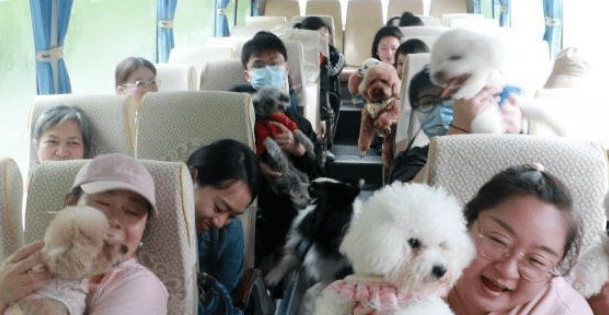The climate is also becoming colder and colder, especially pet owners in northern areas often consider taking their beloved babies south to enjoy a warm winter. However, plane shipping is always a headache but cannot be avoided.
So, how to effectively reduce risks during travel? What aspects should you pay attention to when choosing an airplane?

More than ten years ago, the most common question pet owners may have asked was Whether there is oxygen in the cargo hold and worries about pets suffocating to death. However, the cargo compartments of modern aircraft are equipped with aerobic compartments, and the air circulation system ensures air circulation in the cargo compartment. Therefore, pet owners no longer have to worry about suffocation.
In addition, in addition to the front cargo hold and the rear cargo hold, the current new aircraft also has a bulk cargo area for storing live pets, aviation personnel's luggage, and first-class passengers' luggage. When loading and unloading cargo, these cargoes are usually moved first.
In addition to oxygen, the survival of pets is also inseparable from suitable temperature.
Excessively high temperatures can lead to dehydration or even heat stroke in pets, while too low temperatures can lead to hypothermia or even freezing to death. Therefore, it is important to maintain a temperature suitable for your pet to survive. Because the design of the aircraft cargo compartment is different from that of the passenger cabin. The cargo compartment only has a heating function but no cooling function. When flying at high altitudes, the outside temperature may be as low as minus 30 degrees Celsius, and the cargo door is not as airtight as the passenger door, so there is no need to cool down.

According to the design principle of the cargo hold, we can foresee that pets may face problems during transport Danger: In winter, pets may need to be sent into the cargo hold 2-3 hours in advance and wait in a cold environment for the heating device to start working after the plane takes off. If the aircraft is old or the heating device is in poor condition, the cargo compartment temperature may only be heated to about 10 degrees. In summer, if the outdoor temperature exceeds 30 degrees, the temperature in the cargo hold may reach over 40-50 degrees, putting pets at risk of heat stroke and dehydration.
In order to reduce these risks, we can take the following measures: First, try to choose large passenger aircraft, especially new models of large twin-aisle aircraft. Such aircraft are usually equipped with temperature monitoring devices and temperature regulating devices, and pilots will also pay more attention to and control the temperature of the cargo compartment with live pets. Of course, if necessary, you can try to transport your pet in a season with more suitable temperatures.

In addition, in order to ensure the health and safety of pets, in addition to paying attention to the choice of aircraft Pet owners also need to pay attention to the following points: take their pets for a comprehensive physical examination before traveling, ensure that the pet's immunity certificate is complete, avoid feeding pets food that may cause vomiting or diarrhea, and pay attention to the pet's condition at all times during the flight.
At present, China’s small animal shipping market is mainly occupied by several airlines. Among them, large airlines such as Air China, China Eastern Airlines, China Southern Airlines, Hainan Airlines, Shenzhen Airlines, Sichuan Airlines and Capital Airlines all provide small animal checked services. These airlines are widely distributed and cover major cities across the country, providing convenient consignment channels for pet owners.
However, it should be noted that not every flight accepts small animals as checked luggage. Therefore, before planning to check in a small animal, pet owners must consult the direct ticket office of each airline in advance. These ticket offices can provide the most accurate and up-to-date consignment information and consignment regulations, which may involve the age, weight, vaccination status of small animals, and required documents and certifications. In addition, pet owners need to provide their small animals with adequate food and water, as well as suitable containers and a comfortable resting environment.

In short, although China's small animal shipping market is relatively mature, pet owners It is still necessary to choose shipping methods and airlines carefully and strictly abide by relevant regulations. Only in this way can the safety and comfort of small animals be ensured.

 扫一扫微信交流
扫一扫微信交流
发布评论